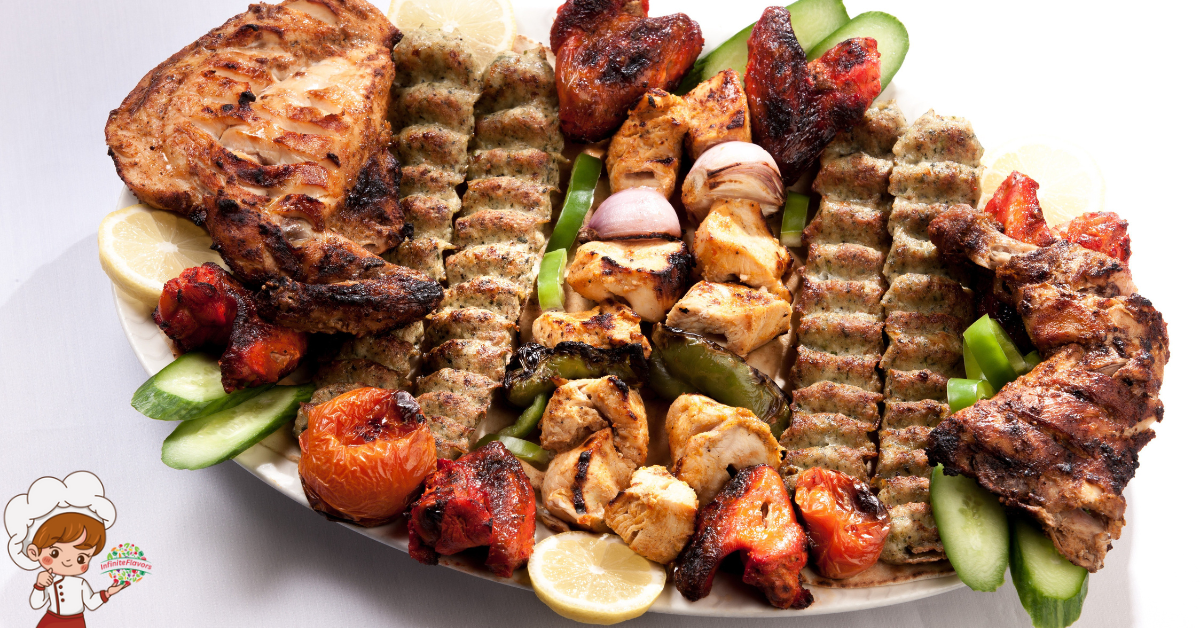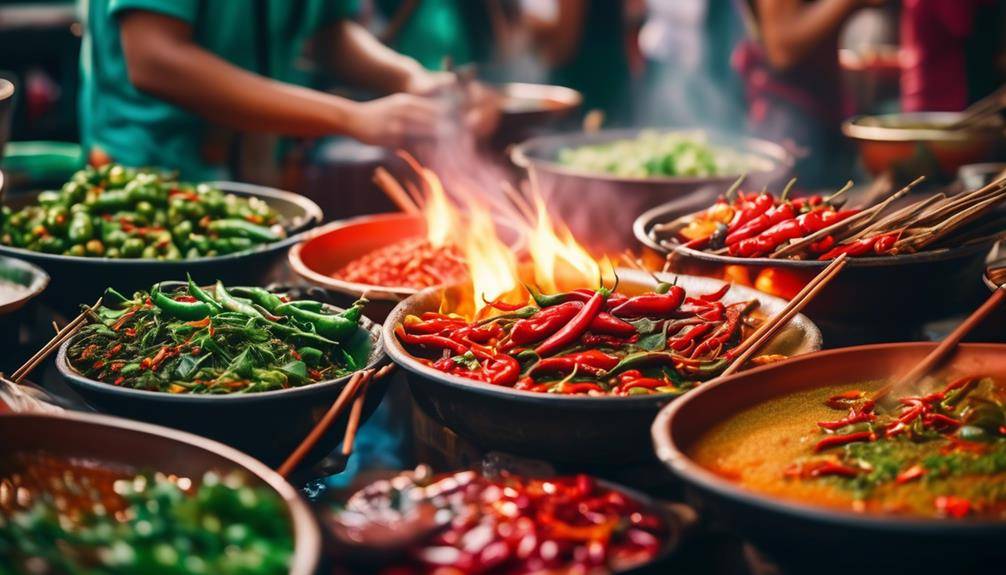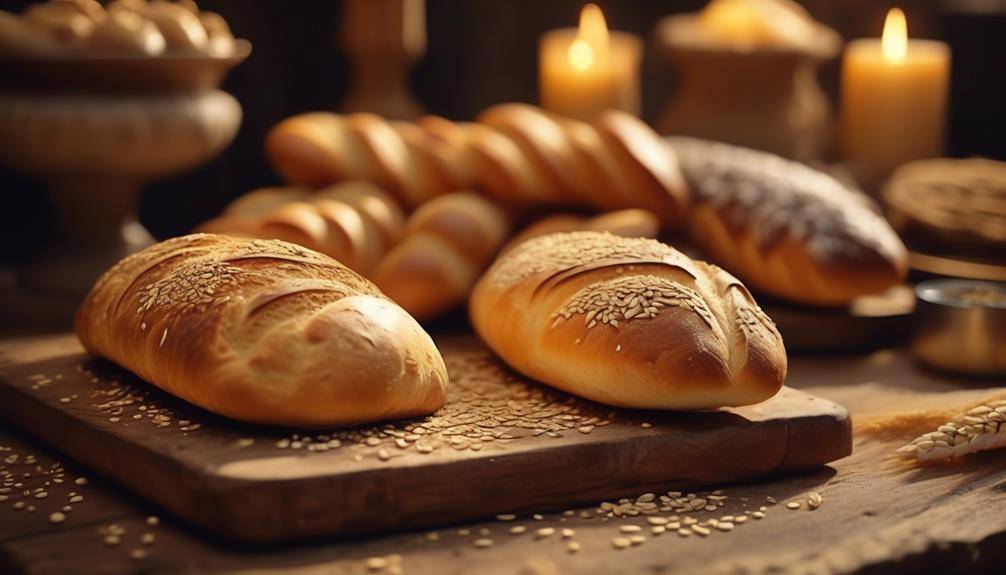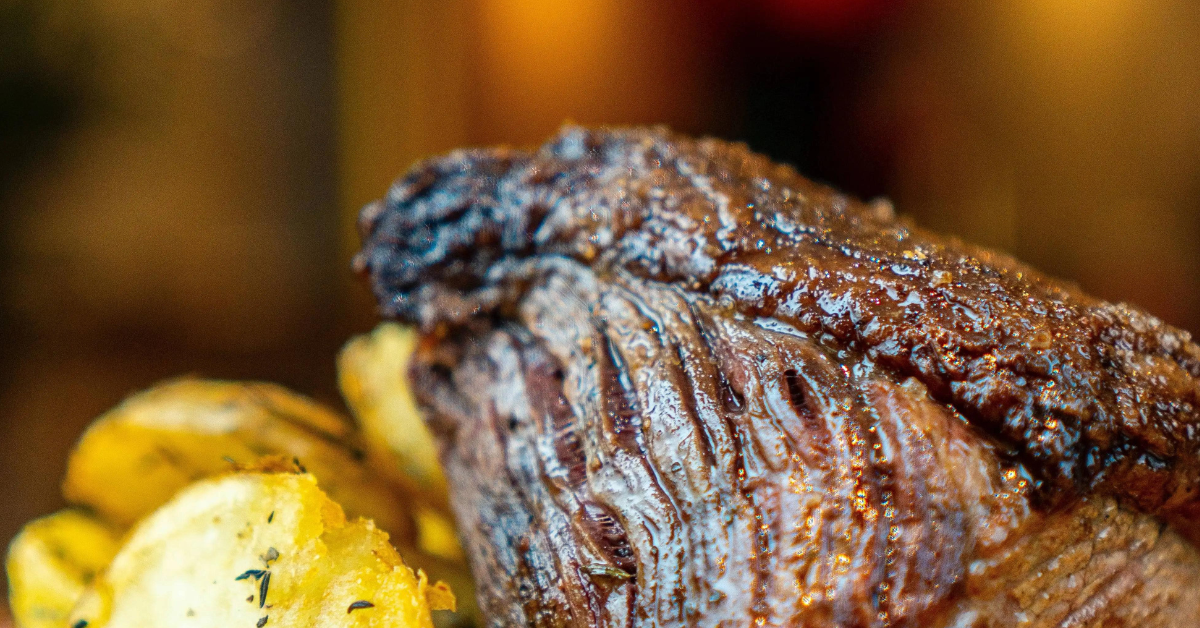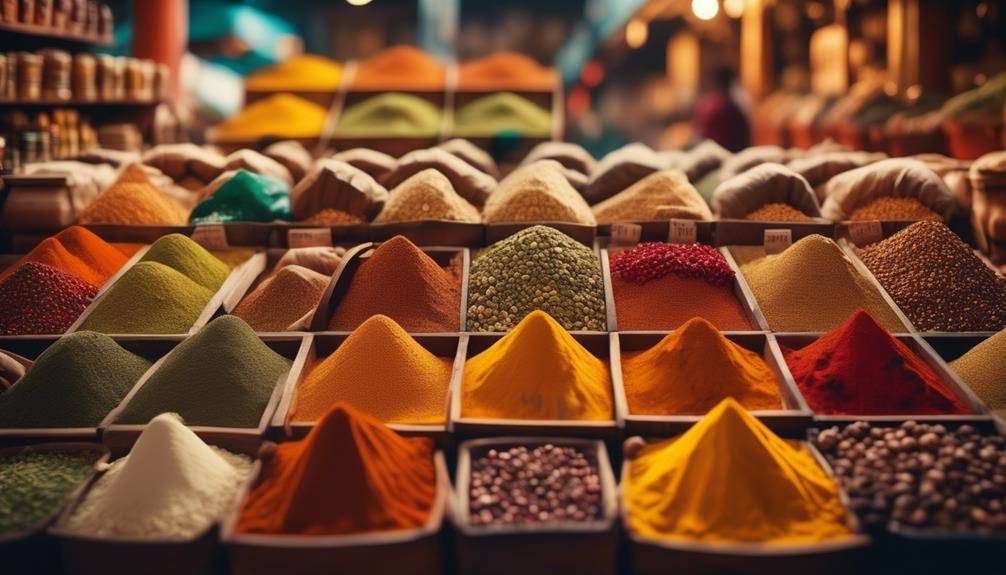The Best Christmas Cookie Baking Techniques

The Best Christmas Cookie Baking Techniques; Baking cookies is like embarking on a culinary adventure, where the kitchen becomes your own little workshop of sweet delights. The scent of warm vanilla and freshly baked goods fills the air, as you carefully mix, shape, and decorate each delicious morsel. But how do you ensure your Christmas cookies turn out just right? In this discussion, we will explore the essential techniques that will elevate your cookie creations to new heights, from mastering the perfect dough to achieving the ideal texture. So, grab your apron and get ready to unlock the secrets of Christmas cookie baking!
Essential Equipment for Baking Cookies
To ensure successful cookie baking, you’ll need a few essential pieces of equipment. When it comes to cookie decorating, having the right tools can make all the difference. One of the most important items you’ll need is a set of cookie cutters. These come in various shapes and sizes, allowing you to create festive designs for any occasion. Look for cookie cutters made of sturdy materials like stainless steel, as they will be more durable and provide clean, sharp edges.
In addition to cookie cutters, a rolling pin is crucial for evenly rolling out your dough. Opt for a rolling pin with handles for better control and ease of use. A silicone baking mat is another must-have item. It not only prevents your cookies from sticking to the baking sheet but also ensures even heat distribution for perfectly baked treats.
When it comes to cookie storage, investing in airtight containers is essential. This will help keep your cookies fresh and prevent them from going stale. Look for containers with a tight seal and enough space to store different shapes and sizes. For added convenience, consider getting a cookie jar with a decorative design that complements your kitchen decor.
Mastering the Art of Cookie Dough
To master the art of cookie dough, it is crucial to mix the ingredients properly. Ensure that all the ingredients are fully incorporated, but be careful not to overmix, as it can lead to tough cookies. Once the dough is mixed, chilling it in the refrigerator for at least an hour allows the flavors to meld and the dough to firm up, making it easier to handle and shape. Finally, rolling out the dough evenly ensures that all the cookies bake evenly, resulting in a consistent texture and appearance.
Mixing Ingredients Properly
For perfectly mixed cookie dough, ensure that you thoroughly combine all the ingredients using the proper mixing techniques. Start by properly measuring your ingredients to ensure accuracy and consistency in your dough. Use measuring cups and spoons specifically designed for dry and wet ingredients, respectively. When measuring dry ingredients like flour, spoon the flour into the measuring cup and level it off with a flat edge for an accurate measurement.
Avoid packing the flour into the cup, as this can lead to dense and dry cookies. Additionally, be mindful of ingredient substitutions. While it is possible to substitute certain ingredients, such as butter for oil or white sugar for brown sugar, be aware that these substitutions can affect the texture and flavor of your cookies. Take note of the specific instructions for each ingredient substitution to ensure the best results. By following these techniques, you can achieve perfectly mixed cookie dough every time.
Chilling the Dough
Ensure that your perfectly mixed cookie dough is given the time it needs to reach its full potential by mastering the art of chilling the dough. Chilling the dough is a crucial step in the cookie baking process, as it helps to enhance the flavor, texture, and overall quality of the final product. There are several chilling techniques you can employ to achieve the best results. One method is to refrigerate the dough for at least 1-2 hours before baking. This allows the fats in the dough to solidify, resulting in a more tender and chewy cookie.
Another technique is to freeze the dough for a shorter period of time, usually around 30 minutes. This is especially useful for doughs with a higher fat content, as it helps to prevent spreading during baking. Pay attention to the dough consistency before chilling, as it should be slightly firm but still pliable. By mastering the art of chilling the dough, you can ensure that your Christmas cookies turn out perfectly every time.
Rolling Out Dough Evenly
Achieve perfectly shaped Christmas cookies by mastering the art of rolling out the dough evenly. To ensure your cookies bake consistently, it is important to roll the dough to an even thickness. Start by lightly flouring your work surface and rolling pin to prevent the dough from sticking.
Divide the dough into manageable portions, working with one piece at a time. Begin rolling from the center of the dough, applying even pressure as you go. If the dough starts to stick, lightly dust it with flour. Aim for a thickness of around ¼ inch, as this will yield cookies that are both tender and sturdy. By employing these simple dough rolling techniques, you can create beautifully uniform cookies that will impress your friends and family.
Perfecting Baking Times and Temperatures
To achieve perfectly baked Christmas cookies, it is essential to carefully consider the optimal baking times and temperatures. The perfect baking time and temperature can make all the difference between cookies that are undercooked, burnt, or just right. One key aspect to master is perfecting browning techniques. The browning of cookies is not only about achieving a beautiful golden color but also about enhancing the flavors and textures.
To achieve the perfect browning, it is important to adjust the recipe ratios. Increasing the amount of sugar in the dough will result in more browning due to the Maillard reaction, which occurs between sugars and proteins when exposed to heat. Additionally, using butter instead of margarine or shortening will contribute to a more desirable browning effect. Butter contains milk solids that caramelize during the baking process, imparting a rich and delicious flavor.
In terms of baking times, it is crucial to follow the recipe instructions. However, every oven is different, and adjustments may be necessary. If your cookies are consistently undercooked, try increasing the baking time by a few minutes. On the other hand, if your cookies are frequently overcooked, reduce the baking time slightly. Keep a close eye on the cookies during the final minutes of baking to ensure they are baked to perfection.
Moreover, it is important to consider the temperature of the oven. Too low of a temperature will result in cookies that spread too much, losing their shape and becoming thin and flat. On the other hand, too high of a temperature may cause the cookies to burn on the edges while remaining undercooked in the center. Follow the recipe’s recommended temperature, but if needed, make small adjustments to find the perfect balance.
Tips for Achieving the Ideal Cookie Texture
For cookies with the ideal texture, pay attention to the ingredients and mixing techniques used in the recipe. Achieving even browning and preventing cookie spreading are two key factors in obtaining the perfect cookie texture.
To achieve even browning, make sure to preheat your oven properly. It is essential to have an accurate oven temperature. Invest in an oven thermometer to ensure accuracy. This will help prevent under or over-baking and result in cookies that are evenly browned. Additionally, rotating the baking sheets halfway through the baking time will help promote even browning. This step ensures that each cookie receives the same amount of heat and prevents any hot spots in the oven.
Preventing cookie spreading is another crucial aspect of achieving the ideal cookie texture. The first step is to use the right amount of fat in your recipe. Too much fat can cause the cookies to spread excessively. Be sure to measure the fat accurately, whether it’s butter or oil. Another tip is to chill the dough before baking. This allows the fat to solidify, which helps the cookies hold their shape. Lastly, using parchment paper or silicone baking mats on the baking sheets can prevent cookies from sticking and spreading too much. These non-stick surfaces create a barrier, allowing the cookies to bake evenly without spreading too thin.
Decorating Techniques for Festive Cookies
Add festive flair to your cookies with these expert decorating techniques. Decorating your cookies is a fun and creative way to make them even more special during the holiday season. One popular and versatile option is royal icing. This smooth and glossy icing is made from powdered sugar, egg whites, and flavorings. It can be easily piped onto cookies using a piping bag and various tips to create intricate designs. Start by outlining the shape of your cookie with a thicker consistency of royal icing. Once the outline is dry, you can flood the inside with a thinner consistency of icing, creating a smooth surface for decorating.
To make your cookies truly festive, consider adding edible decorations. Sprinkles, sanding sugars, and colored sugars are all great options. These decorations can be sprinkled onto your cookies while the icing is still wet, allowing them to adhere. You can also use edible markers to draw on your cookies or create intricate designs. Another fun option is to use edible glitter or disco dust to add a touch of sparkle to your cookies. These shimmering decorations can be dusted onto your cookies using a clean, dry brush.
When it comes to decorating your festive cookies, the possibilities are endless. Let your creativity shine and have fun experimenting with different techniques and designs. Remember to allow your cookies to fully dry before packaging or stacking them to avoid smudging. With some practice and a little bit of patience, you can create beautifully decorated cookies that will impress your family and friends this holiday season.
Storing and Packaging Christmas Cookies
When storing and packaging your Christmas cookies, it is important to follow proper techniques to keep them fresh and ensure they are presented beautifully. Cookie preservation is key in maintaining the taste and texture of your baked goods. To start, let your cookies cool completely before storing them. This prevents condensation from forming, which can make them soggy. Once cooled, place them in an airtight container or resealable plastic bag. If you have different types of cookies, separate them with parchment paper to prevent flavors from mingling.
To further extend their freshness, consider freezing your cookies. First, make sure they are completely cooled. Then, layer the cookies in an airtight container or freezer bag, separating each layer with wax or parchment paper. Before freezing, remove as much air as possible from the container or bag to prevent freezer burn. When you’re ready to enjoy them, simply thaw them at room temperature.
Now let’s move on to creative cookie packaging. When gifting your cookies, presentation is key. Consider using decorative tins, boxes, or jars to make your cookies stand out. To add a personal touch, you can tie a festive ribbon around the package or attach a handwritten note. If you’re feeling extra creative, you can even make your own cookie gift bags using clear cellophane or decorative paper.
Frequently Asked Questions: The Best Christmas Cookie Baking Techniques
Can I Use Regular All-Purpose Flour Instead of Cake Flour in My Cookie Dough Recipe?
You can use regular all-purpose flour instead of cake flour in your cookie dough recipe. However, keep in mind that cake flour has a lower protein content, resulting in a softer texture. For perfect cookie shapes, chill the dough and use cookie cutters.
How Can I Prevent My Cookies From Spreading Too Much During Baking?
To prevent your cookies from spreading too much during baking, try adjusting the baking time. Keep an eye on them and take them out of the oven a minute or two earlier than the suggested time.
What’s the Best Way to Achieve a Chewy Texture in My Christmas Cookies?
To achieve a chewy texture in your Christmas cookies, focus on your cookie dough recipe. Use more brown sugar and less white sugar, as brown sugar adds moisture and chewiness.
Can I Use Margarine Instead of Butter in My Cookie Recipes?
Yes, you can use margarine instead of butter in your cookie recipes. Margarine is a common substitute for butter in baking. However, keep in mind that margarine has a higher water content, which may affect the texture and taste of your cookies.
Is It Necessary to Refrigerate the Cookie Dough Before Baking?
Refrigerating cookie dough before baking has several benefits. It helps to solidify the fat, resulting in less spread and puffier cookies. However, if you’re short on time, there are alternatives to chilling for Christmas cookies.
Conclusion
In conclusion, mastering the art of Christmas cookie baking involves a combination of essential equipment, precise cookie dough techniques, and careful attention to baking times and temperatures. By following these tips and techniques, you can achieve the ideal cookie texture and create festive, beautifully decorated treats. Don’t forget to store and package your cookies properly to ensure they stay fresh and make delightful gifts for friends and family. Happy baking!



